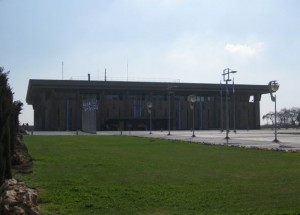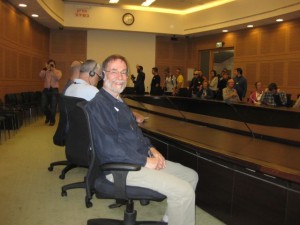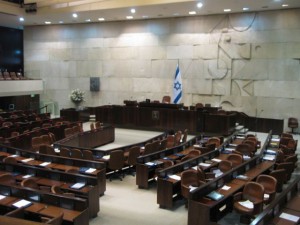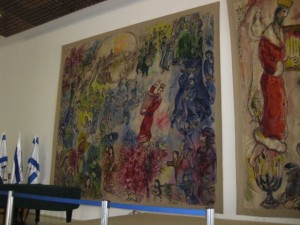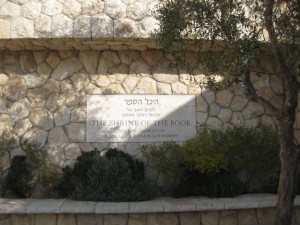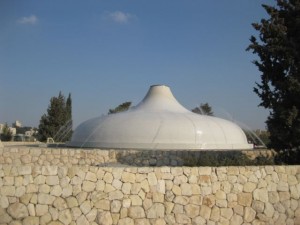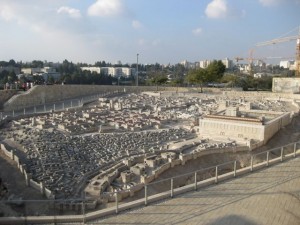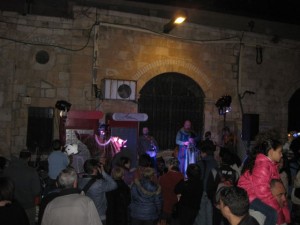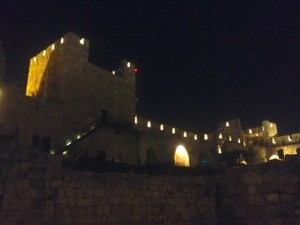To balance out the many eons of history we absorbed we also spent a day exploring the newer part of Jerusalem. We learned a lot about how modern Israel is governed and functions.
We drove through Mea Sharim, a very small densely populated neighbourhood of the ultra-orthodox. We weren’t allowed to get out of the van as non-ultra Orthodox are not welcome in the area. Unfortunately, none of my pictures of the traditional garb of the men and women turned out. A couple of things I found fascinating – 60% of the men do not work and spend their time studying. This is supported by the Israeli social welfare state. Women when they get married shave their heads so their hair is no longer a temptation to men but when they leave the house they wear a wig. And the photo below of all the information posted on the walls.
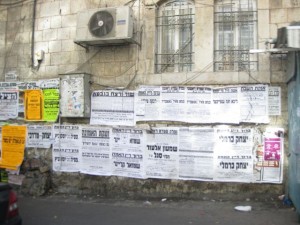
Mea Sharim – Ultra-orthodox neighbourhood where they have no tv or radio and all news is communicated by posting on the wall
First stop was the Knesset which is Israel’s parliament. They only have one 120-member chamber which is elected every 4 years based on proportional representation. There is also a President by the position is mostly ceremonial.
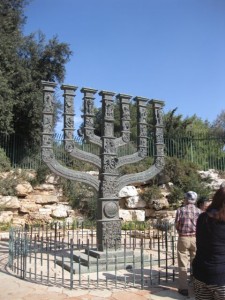
Menorah sculpture donated by Great Britain and France in thanks for Israel’s assistance in the 1956 Suez Crisis in Egypt
After our civics lesson we went to visit the Museum of Israel which is actually a number of museums together. We only visited the Shrine of the Book which actually displays and explains the Dead Sea scrolls. It was fascinating. I have to admit that on this day I was the one that held up the group as I was loath to run through the displays instead of truly learning and appreciating the scrolls for the incredible historical material they are.
The museum had an interesting scale model of the Old City as it built in the period of the Second Temple (the big building on the right of the picture below). Apparently it was originally on display in a hotel that has since been destroyed so they labeled each piece and moved it here, rather like a very large complex lego construction.
The most moving visit for me of the entire trip was the time we spent at Yad Vashem, the memorial and museum for victims of the Holocaust. There were three elements that particularly moved me – the memorial for the Children, the garden of the Righteous Among the Nations, and the Yad Vashem museum itself. The memorial of the Children is a darkened room in which 5 lit candles are multiplied with mirrors to produce 1.5 million points of light representing all the children who were lost. They read all the names and ages of the children they know of which takes a full 24 hours. In the garden of the Righteous Among the Nations contains 23,000 trees, one for each of the people who helped save Jews during the Holocaust. And then there is the stark, powerful, and moving museum which chronicles the rise of the Nazi party and the unrolling of the Holocaust horrors.
Unfortunately we were only allotted 1.5 hours and I only made it half way through the museum which I found very disappointing. There is so much information and so many videos of survivors stories that I wanted to really understand and learn. I spent most of my time there in tears. This reenforced the emotional impact of what I saw and experienced when I visited Auschwitz-Birkenau.
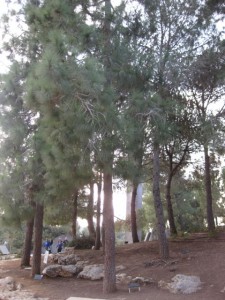
Garden of the Righteous Among the Nations where each of the 23,000 trees is planted in memory of those who helped Jews during the Holocaust (Shoah)
After the emotional turmoil of Yad Vashem we returned to the Old City for a bit of light hearted fun. We attended a sound and lights show at the Citadel where they project images onto the walls of the courtyard with music telling the story of Jerusalem’s history. However, at the same time there was a Medieval festival happening in the Old City that night. It was just a fun buskerfest type of event put on for 5 Thursday evenings in November primarily for the entertainment of Jerusalem residents. It was very crowded with families with children and the fun performances we go to see as we walked through the old section.

